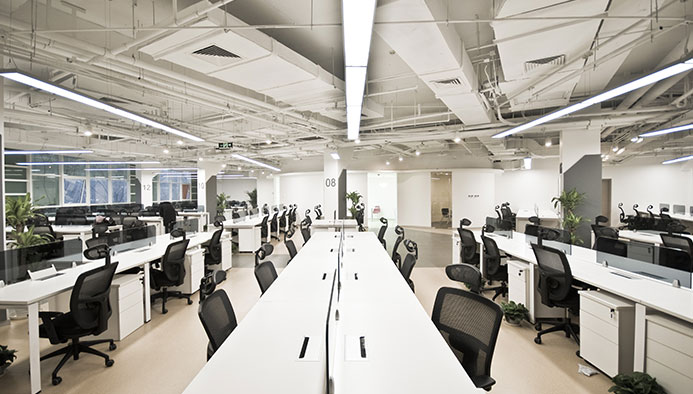This article looks at the rise of seat-based billing and how it could facilitate a new wave of innovation that will help providers transcend beyond print.
The Commoditisation Issue
In the early 2000s, traditional print resellers began competing on price alone and the need for differentiation became essential, leading to the birth of MPS. MPS was about bundling supplies and services into one recurring price and moving from a transactional, product-oriented arrangement to a contractual, services-oriented one. Instead of customers managing their print environment — placing supply orders after they’ve run out of toner and making service calls when printers go down — dealers started managing it for them.
These new MPS contracts were a win-win. They secured ongoing revenue for dealers while helping customers reduce their printing costs. MPS gave the office print industry a powerful boost.
Yet here we are again with a commoditised product. Only now it’s MPS itself, the one distinguishing feature between most MPS offerings being the price. Still, if there’s anything that office print providers are used to, it’s rapid change. So now they’re looking for a new way to sell. A new way to package their goods and services to create value for the customer and differentiate themselves from the competition.
In this industry, there’s always a new way. One of them is seat-based billing (SBB), an alternative to the traditional way of billing for managed print, which is cost per page (CPP). A number of our clients in this space have expressed an interest in moving from CPP to SBB. As a result, we are already looking at ways of developing our MPS field service management software to accommodate SBB contracts.
But what exactly is SBB? And how does it differ from CPP?
Cost Per Page (CPP) Versus Seat-based Billing (SBB)
The most popular billing method for MPS has always been cost per page (CPP), also known as cost per click (CPC) or cost per image (CPI). This is where the cost of things like consumables, maintenance, parts, support and toner management are bundled into the cost per page.
The popularity and wide adoption of the CPP model is one of the reasons it can be difficult to set your solutions apart from the competition. An even bigger problem is that it puts you and your customer at odds. You want your customer to print more. Your customer wants to print less. Indeed the whole premise of an MPS solution is to reduce unnecessary printing. And since page volumes are shrinking, basing your organisation’s revenue on a linear association with those volumes is unsustainable.
However, seat-based billing (SBB) is now emerging as a more sustainable alternative. Also known as per-user billing or cost per seat, SBB is based on staff numbers rather than pages printed. It is a flat fee billed per end user per month that covers support for all print-enabled devices each person uses. This could include locally connected printers, desktop printers, multifunction devices (MFDs), fax machines and scanners as well as all consumables, maintenance, parts and software. It plays into the all-you-can-eat mentality that so many customers want and is already popular in other industries, e.g. TV and music subscription services like Netflix and Spotify.
SBB involves a shift in perspective, focusing on users and their needs and behaviours rather than the number of pages printed. This offers an escape from the commoditised world of CPP pricing as well as access to new and more profitable revenue streams. It also ensures perfect alignment between you and your customer. Your customer will spend less but you will make more. This makes for a stronger partnership between you.
How Can You Make More Money With SBB?
Like CPP, SBB involves building a seat price that bundles various services into one fee. But unlike a traditional CPP quote, you have more scope to “layer” additional services onto the seat price. With CPP, there’s only so much you can charge for by the page. Imagine, for instance, trying to charge for VoIP or bottled water by the page. However, it’s perfectly feasible to add these kinds of services onto a user-based price.
For example, you could look to add the following to each seat:
- Hardware (printers, copiers, MFDs, desktop computers, servers etc.)
- Document management software
- Workflow software
- Print governance software
- Managed IT services
- Coffee and water services
- Digital signage and displays
- Telecommunications including IP telephony and VoIP
Currently you might be offering some of these things by way of one-off sales. However, by bundling them into the seat price, they become part of your recurring revenue stream. And the margins on software are higher, so even as your customers save money, you can mitigate the difference.
The Challenges Of Maintaining A Profitable Seat Price
It’s important to note that with SBB comes the risk that users will abuse the system and print too much or, for instance, print everything in colour. Even though SBB feels like all-you-can-print, it cannot literally be so. That’s because toner is still the most expensive part of any MPS contract. Moreover, the whole point of MPS is to control an organisation’s print output.
So, to make SBB profitable, you first need to build a seat price that is based on a deep understanding of an organisation’s historical print behaviour. You can do this by way of a thorough user- and device-based assessment that gets rid of any assumptions and unknowns. You then need to put as many controls in place as possible to ensure that users don’t overprint.
The first of these controls is having the right language in your contracts, stipulating volume, colour and coverage ratio limits. The second is including print governance software with each seat. This enables your customers to assign user permissions, set restrictions on printing, and keep track of volume and colour usage.
The third is having a strong field service management (FSM) system that gives you full and detailed visibility and monitoring of all service costs. That FSM system needs to integrate with your customer’s machines and let you easily track toner consumption and contract/machine profitability. Your FSM system should make it immediately obvious when your customer is printing more than they should. Easy access to this data enables you to bill correctly, adjust your contract price and/or terms where necessary, and advise your customer on modifying their print behaviour.
With the right controls and software in place, print management can improve with SBB because it puts a name to behaviour. And while managing print volumes is necessary for both CPP and SBB programs, it’s easier to pinpoint misuse with SBB.
Transcending the Page
The SBB model has been used in the IT services field for years. The fact that there has been a convergence between MPS and IT services for some time is all the more reason for implementing SBB in the documents and imaging space. Quocirca’s Global Print 2025 study revealed last year that IT services providers who sell print services as part of a larger offering are set to become the biggest influencers in the market by 2025. With that in mind, a move to SBB makes a good deal of sense. It keeps things simple for them and the customer by bringing everything they offer under one flat monthly fee.
For MPS providers that haven’t yet branched into new areas, SBB makes it easier to do so. Billing in CPP doesn’t really allow you to look much past the page. With SBB you can say to a customer, “For an extra £5 per seat per month, we can take care of your desktop computers as well.” There is no additional contract, just an addendum to the existing one. Nor are there any difficult ROI discussions or a large capital budget approval process as it happens immediately and everything is under subscription.
Going forwards, the ability to continually layer the seat with new offerings is likely to be the biggest advantage of the SBB model. It means that SBB could become a powerful way for office print providers to grow.





